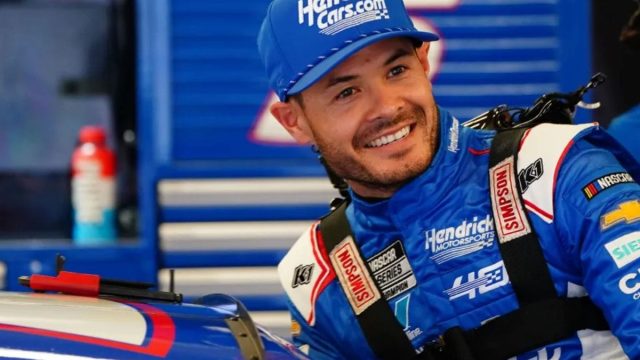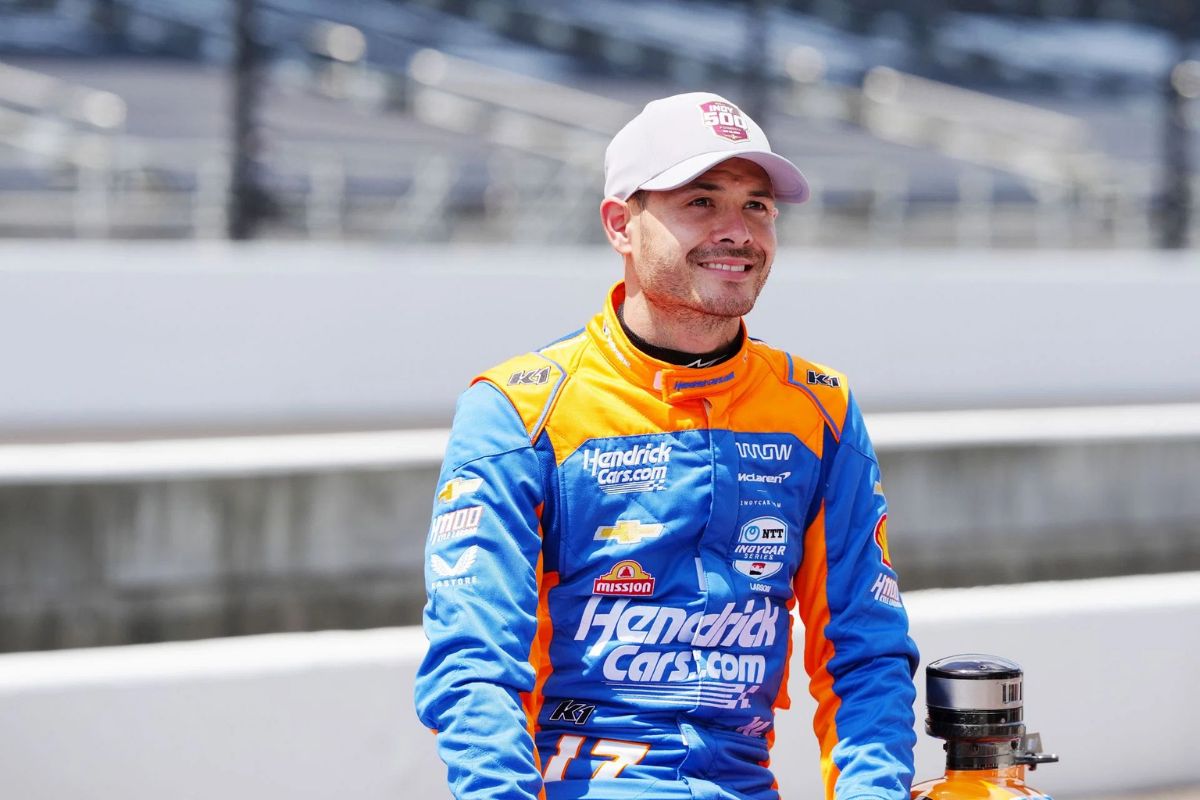Kyle Larsons Michigan Crash: Kyle Larson‘s recent crash at Michigan serves as a crucial case study in the environment of NASCAR, where even the smallest error can lead to noteworthy consequences. The incident resulted in a dramatic fall from a five-point lead to a 32-point deficit and raised questions about decision-making under stress and the unpredictable dynamics of racing. As Larson grapples with the implications of this setback, the broader impact on championship standings and strategies for upcoming races remains a vital focal point for fans and analysts similarly. What does this mean for Larson’s playoff ambitions?
Key Highlights
- Kyle Larson’s crash at Michigan was triggered by a shallow entry into Turn 3, leading to a significant loss of control.
- His pit decision during late caution placed him in ninth position, making him vulnerable to aggressive competitors.
- The multi-car pileup caused by Larson’s spin resulted in a drastic drop in his championship points standings.
- His crash transformed a five-point lead into a 32-point deficit, dropping him to fourth place in the standings.
- Two upcoming races at Daytona and Darlington are crucial for Larson’s recovery and championship aspirations.
Kyle Larson’s Race Incident at Michigan
Frequently, race incidents can drastically alter the path of a driver’s season, and Kyle Larson’s mishap at Michigan exemplifies this reality. During a significant turning point in the race, Larson’s decision to pit following the late caution became a critical moment that ultimately derailed his championship aspirations. Restarting in the ninth position, he faced an uphill battle as he contended with a compressed field enthusiastic to capitalize on the final laps.
As the race unfolded, Larson’s vulnerability became apparent. The decision to take a shallow entry into Turn 3, compounded by the aggressive three-wide racing, heightened the risk of losing control. In the high-stakes environment of NASCAR, where fractions of a moment can dictate outcomes, Larson’s struggle to maintain grip on the white line led to a catastrophic spin at corner exit.
The resulting multi-car crash destroyed his chances for a victory and resulted in the loss of a vital points lead in the championship standings.
This incident highlights the unpredictable nature of racing and the fine line drivers tread between ambition and caution. Larson’s situation serves as a glaring reminder that even the most skilled drivers can find themselves ensnared in a moment of misjudgment, with repercussions that extend far beyond a single race.
Damage and Aftermath
In the aftermath of the Michigan crash, the damage extended beyond Kyle Larson’s destroyed No. 5 Chevy, impacting several competitors involved in the multi-car pileup. Significantly, drivers such as Bubba Wallace, Christopher Bell, Joey Logano, Todd Gilliland, Chris Buescher, and Chase Briscoe all sustained varying degrees of damage. The incident not only altered the race dynamics but also reshaped the championship landscape as drivers scrambled to recover from the unforeseen wreckage.
Larson’s miscalculation resulted in a catastrophic outcome; he fell out of competition 85 laps before the race concluded, finishing in a dismal 34th place and accumulating a mere three points. This was a striking contrast to his aspirations of maintaining the championship lead.
In his post-race reflection, Larson openly acknowledged his role in the crash, stating, “I just messed up.” His admission highlights the precarious nature of racing, particularly during restarts, where the quest for position can swiftly escalate into disaster.
“You try to get all you can on restarts. I was just trying to funnel myself up the racetrack. I didn’t want to get stuck on the bottom three-wide. Just got myself in an awkward aero spot and lost it. It’s unfortunate. I made a mistake and cost ourselves a lot of points today.” – larson
The implications of this crash resonate beyond personal misfortune; it reverberates throughout the standings, creating opportunities for rival drivers while simultaneously constraining Larson’s path in the championship chase.
Comparison with Other Drivers
Kyle Larson’s crash at Michigan was not an isolated incident, as several other seasoned drivers faced comparable predicaments during the race. Denny Hamlin, a veteran known for his competitive edge, found himself spinning out while contending for the lead, demonstrating that even the most skilled drivers are vulnerable to the track’s unpredictability. Likewise, Martin Truex Jr. experienced a setback when he crashed into the wall late in the race.
What differentiates these incidents, however, is the drivers’ reactions and awareness in critical moments. Larson acknowledged that he felt a warning just before his car lost control, yet the characteristics of the Next Gen cars complicate recovery efforts when they begin to spin. This notion raises questions about the balance between aggressive racing strategies and the fine line that exists between control and chaos.
“Yeah, I mean you get a little bit of warning right before you start spinning,”
“But once these Next Gen cars step out, it’s really hard to save it. I was just doing what I thought would be right to funnel our way up and just put myself in bad spot.” – larson
In comparing Larson’s experience with that of Hamlin and Truex, it becomes evident that the margin for error in NASCAR is alarmingly slim. Each driver’s decision-making process, influenced by situational awareness and instinct, plays a crucial role in determining race outcomes.
While Larson’s miscalculation ultimately cost him dearly, the collective mishaps of these elite drivers reveal a broader narrative about the demanding nature of the sport. The Michigan race served as a striking reminder that fortune and misfortune in NASCAR can hinge on fleeting moments of judgment under duress.
Impact on Championship Standings
The repercussions of Larson’s crash at Michigan extend far beyond the immediate chaos of the race, greatly impacting the championship standings as the regular season approaches its finale. Entering the race with a five-point lead over Tyler Reddick and a six-point advantage over teammate Chase Elliott, Larson’s misfortune not only cost him the race but also a notable position in the standings.
With Reddick clinching victory, he seized the opportunity to leapfrog Larson in the standings, taking an essential step toward securing the 15 bonus points for the playoffs. Reddick now leads Elliott by ten points, while Larson’s crash relegated him to fourth place, a staggering 32 points behind the new frontrunner. This shift highlights the volatility of the championship landscape as the season draws to a close.
The loss of momentum for Larson is palpable; shifting from a leader in points to a contender at risk emphasizes the significant stakes present in NASCAR. The implications of such a slip are profound, not only affecting Larson’s confidence but also heightening the tension as he must now recalibrate strategies to reclaim his position.
As competitors rally in the final races, Larson’s crash serves as a poignant reminder of how quickly fortunes can change in the pursuit of the championship. The ensuing races will certainly be essential for him, as he must navigate both the physical challenges of the track and the psychological ramifications of his recent misstep.
Upcoming Races and Playoff Implications
With only two races remaining before the playoffs, the strain is mounting for drivers like Larson as they head into essential events at Daytona International Speedway and Darlington Raceway. These races are not merely final opportunities to solidify standings; they are crucial moments that can dramatically alter the path of the championship hunt.
Daytona, famed for its unpredictable nature, often leads to chaotic racing, where a single miscalculation can result in noteworthy consequences. For Larson, who is currently reeling from the fallout of his Michigan crash, the stakes are particularly high. He must navigate the high-speed pack while simultaneously protecting his position in the championship standings. A strong finish at Daytona could not only restore confidence but also provide key momentum heading into the playoffs.
Conversely, Darlington presents its unique challenges, with its narrow confines and abrasive surface demanding precision and skill. Success here requires mastery over tire management and race strategy, elements that could further impact Larson’s playoff positioning. Given the high level of competition, each driver will be acutely aware that a single performance could either improve or obliterate their playoff prospects.
As the regular season culminates, the implications of these two races extend beyond mere points; they are a litmus test for resilience and adaptability. For Larson and others vying for playoff spots, the focus must remain sharp, as the road to the championship is fraught with peril and opportunity in equal measure.
News in Brief: Kyle Larsons Michigan Crash
The Michigan crash experienced by Kyle Larson serves as a reminder of the nature of NASCAR competition, where a single miscalculation can dramatically shift championship dynamics. The incident not only resulted in considerable damage and a loss of points but also emphasized the intense stress drivers face during critical moments. As the playoffs approach, the ramifications of this event will undoubtedly influence Larson’s tactical decisions and performance in upcoming races, highlighting the importance of precision in racing.
ALSO READ: Kyle Larson’s Rookie Flashback: Michigan Race Delay Sparks Nostalgic Reflections



